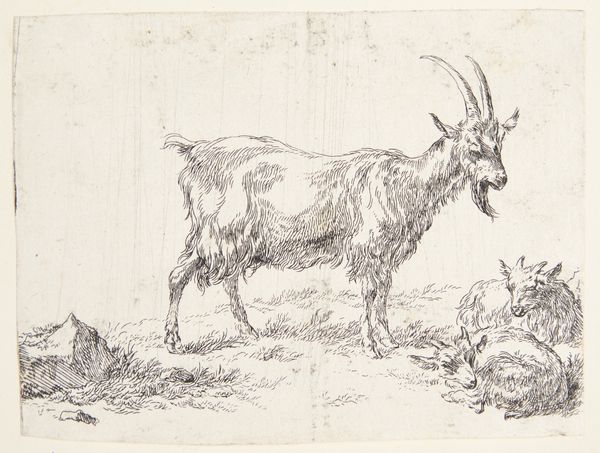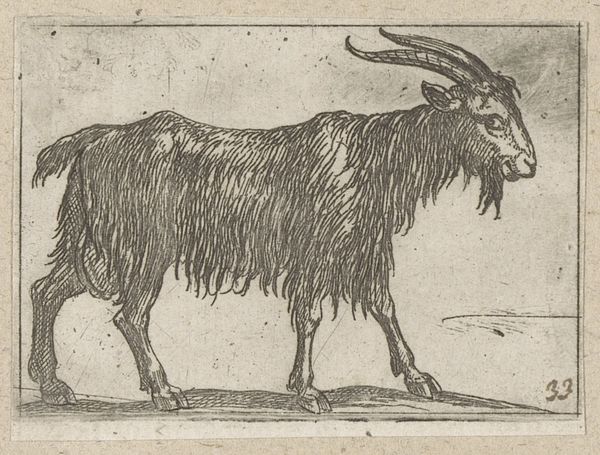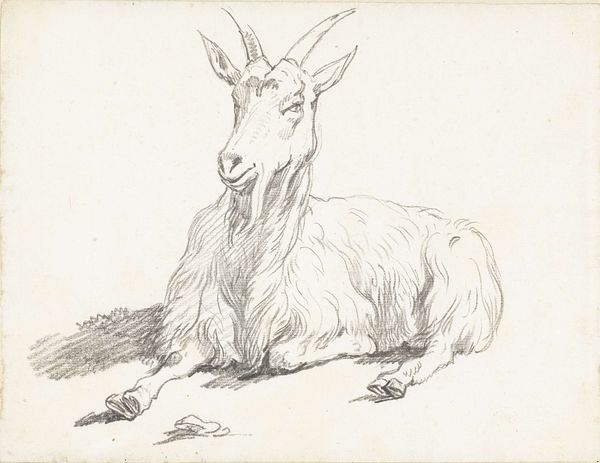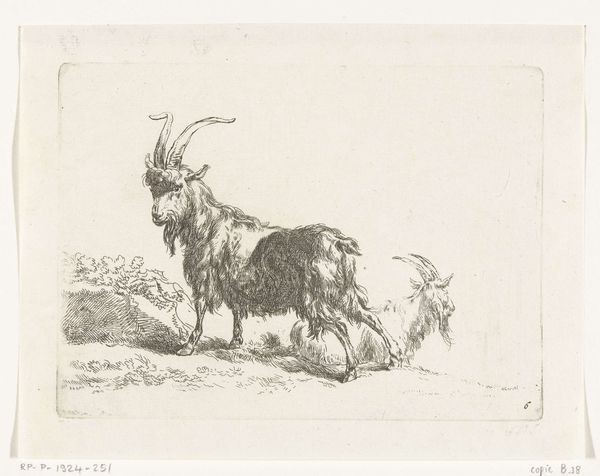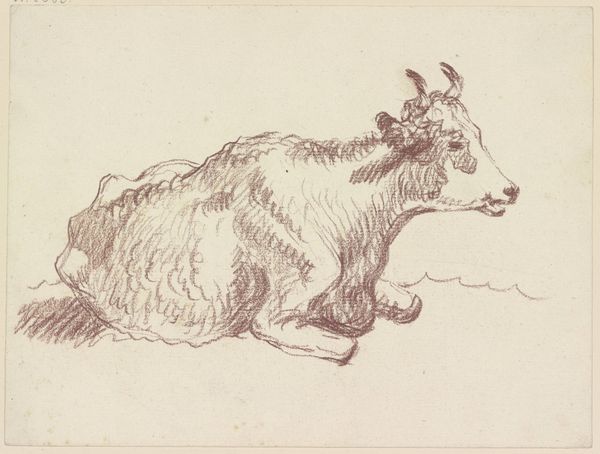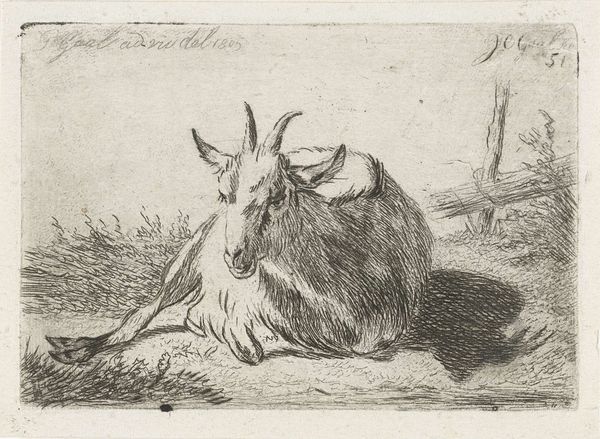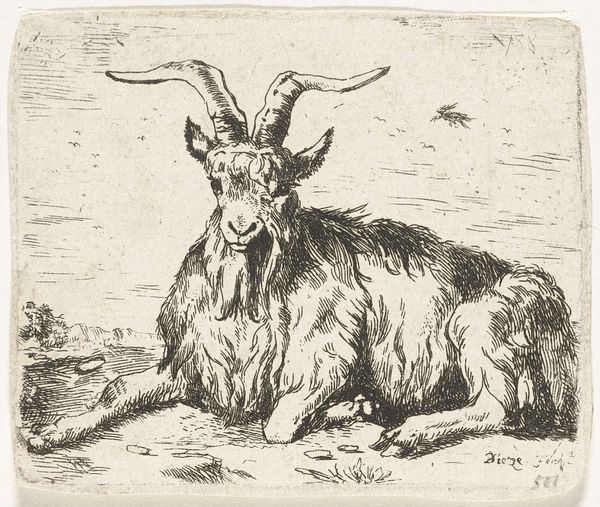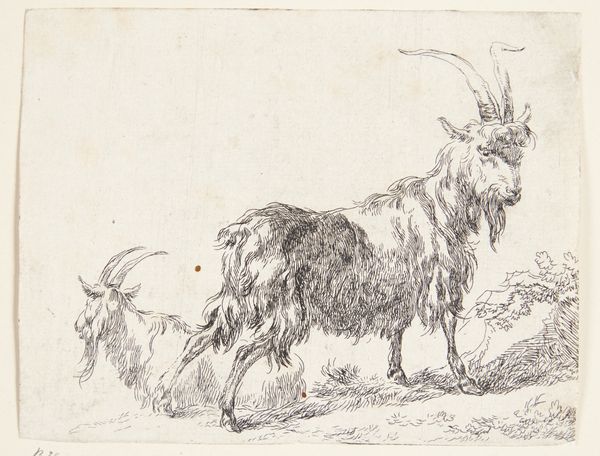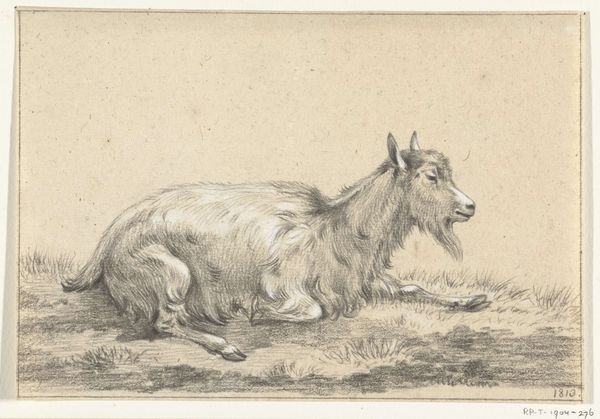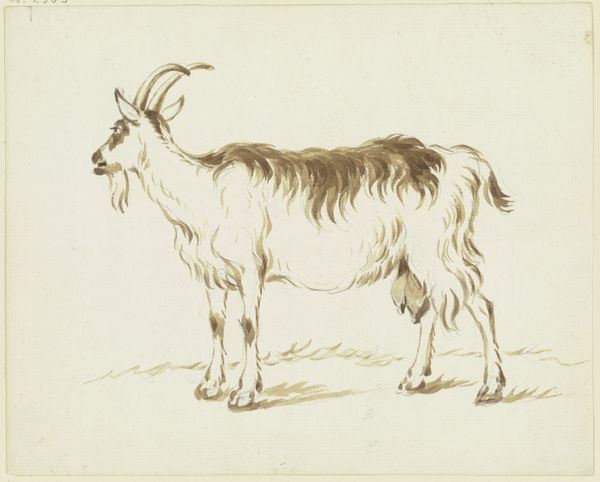
drawing, ink
#
portrait
#
drawing
#
ink
#
realism
Dimensions: height 67 mm, width 94 mm
Copyright: Rijks Museum: Open Domain
Curator: "Studie van een geit of bok," Study of a Goat or Buck, as it translates, created sometime between 1809 and 1850, currently residing here at the Rijksmuseum. It’s an ink drawing by an anonymous artist. What strikes you initially about it? Editor: Oh, he looks so grumpy! I mean, delightfully so. A proper curmudgeon of a goat. The texture is wonderful too—that scruffy, almost tangible wooliness captured in simple ink strokes. It's like a character study, really. Curator: Indeed. Think about the production of ink at the time, and how this artist engaged with it. The quality of ink, its accessibility, dictated so much of the process. Notice the paper, too—its probable source, the rag trade, the labor involved in its creation. Even something as simple as this drawing is embedded in systems of production and value. Editor: I do see what you mean and thinking about that...makes it so immediate. A little drawing on a very used-up piece of rag! The drawing style almost feels rushed, spontaneous. Did they catch the goat mid-grimace? Was the goat a frequent customer at the markets of Amsterdam and recognizable to everyone in the city? Or, maybe, it's just projection, but there’s definitely something alive here. Curator: It’s the realism that allows the viewer that empathy, don't you think? It resists idealization. Also, I am not so sure the drawing style suggests spontaneous to me. Ink drawing has always taken specific skill, and for being an "anonymous" piece of artwork this clearly took much knowledge of the behavior and the physiognomy of the animal in order to be accurately reproduced for academic, or economic purposes. The amount of goats populating Dutch painting back then suggests something else than plain humor. Editor: Yes! Academic study makes sense. Now I imagine a student diligently sketching in a drafty barn, the bleating goat a rather unwilling model...But isn't it wonderful how something conceived perhaps as mere study transcends that, acquiring a personality of its own? What began with work has evolved into something else altogether, which then became craft? Curator: Precisely, a beautiful example of the shifting sands of categorization, the blurring of utility and art. Thank you. Editor: It was a joy; it really changed the way I see the world, or rather how people are a constant part of it and craft and art a form of understanding.
Comments
No comments
Be the first to comment and join the conversation on the ultimate creative platform.


